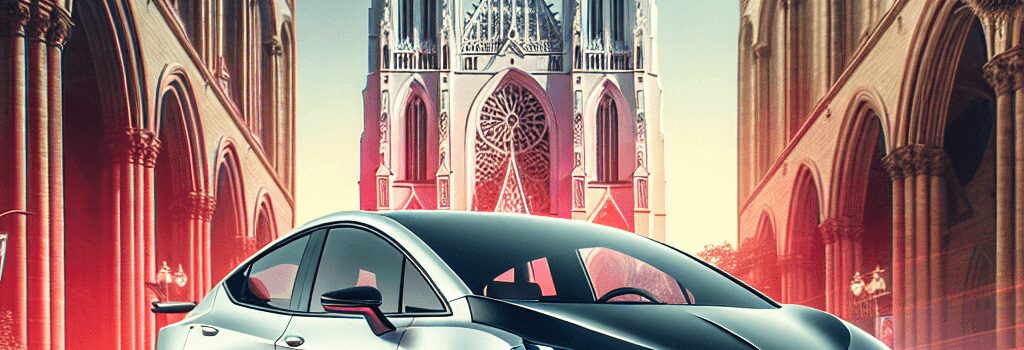Cupra’s Bold Leap: Affordable, Stylish, Electrified Performance in the US

Amid evolving trade policies and a shifting automotive landscape, Cupra, a fast-emerging brand under the Volkswagen Group, is charting an ambitious path toward the US market. With its blend of affordable pricing, eye-catching design, and electrified performance, Cupra seeks to capture the imaginations of younger car enthusiasts all while navigating uncertain tariff scenarios.
What is Cupra?
Originally known as a performance badge for Seat—the more cost-conscious arm of the Volkswagen Group—Cupra has evolved into a standalone entity tailored for drivers who crave sporty aesthetics and dynamic driving. While not positioned as a luxury marque or exclusively electric automaker, Cupra fills the niche between mass-market accessibility and premium performance. “We are not a brand for everyone,” asserts Chief Brand Officer Igansi Prieto, emphasizing a focused appeal to a younger, design-oriented clientele.
Market Strategy and Global Manufacturing Flexibility
Despite the prevailing uncertainty introduced by punitive tariffs that currently add up to 25%, Cupra’s entry into the US market is slated for 2030. The brand’s strategy leverages the expansive and diversified production network of the Volkswagen Group. With manufacturing plants in Mexico, the United States, Europe, and beyond, Cupra is well positioned to stay agile amid changing international trade policies. Sven Schuwirth, Cupra’s vice president of sales and marketing, explains, “Our approach is to remain flexible—you never know how import duty situations might evolve over the next few years.”
Technical Specifications and Electrified Performance
Cupra’s technical prowess is evident in models like the Formentor and Terramar. The Formentor, for instance, is available with either a 48V mild hybrid powertrain—with pricing starting under $32,000 (28,000 euros)—or a more robust plug-in hybrid option starting at under $49,000 (43,000 euros). Built on the Volkswagen Group’s versatile MQB platform, its driving dynamics are engineered to strike a balance between the responsiveness of a GTI-level vehicle and the refinement characteristic of performance-tuned Audi models.
The Formentor’s cabin further differentiates it from its counterparts. Premium touches such as full carbon fiber seatbacks, innovative matte paint finishes, and a driver-centric cockpit design speak to the brand’s dedication to both performance and style. Engineers have integrated robust battery management systems and regenerative braking technology that optimize both efficiency and power delivery, positioning Cupra as a forward-thinking player in the electrification race.
Motorsport Engagement and Virtual Reality Integration
While Cupra has garnered attention with spirited city-ready road cars, its commitment to motorsport remains equally pronounced. Active participation in events like Formula E and the electric off-road Extreme E series underscores the brand’s dedication to high-performance electrified driving. Beyond traditional motorsport, Cupra is pioneering the use of virtual reality (VR) systems not only for safety simulations but also to let drivers explore virtual race tracks in empty lots. This VR integration allows enthusiasts and engineers alike to gain insights into vehicle dynamics under race conditions without compromising on safety.
Deeper Analysis: Electrification and the Global Supply Chain
The shift toward electrification in the automotive industry is rapidly accelerating. Cupra’s dual-hybrid approach offers significant torque surges and improved efficiency through features like the 48V mild hybrid system and fully integrated plug-in hybrid setups. These systems are backed by advanced battery management and thermal control systems that ensure longevity and optimal performance without compromising driver experience.
Moreover, the brand’s global manufacturing network minimizes the risk of supply chain disruptions and tariff-related cost escalations. By strategically aligning production sites in Mexico, the US, and Europe, Cupra can swiftly adapt to evolving trade policies. This adaptability is widely regarded by industry experts as a crucial factor for carving out a niche in competitive markets, particularly where production costs and legislative environments are in constant flux.
Expert Opinions and Future Trends
Automotive analysts caution that the success of Cupra’s US debut hinges on its ability to maintain affordability while offering a distinctive blend of style and performance. With competitors in both the traditional and electric segments ramping up their offerings, Cupra’s focus on design innovation and hybrid powertrains could serve as a significant differentiator. Experts also note that the integration of state-of-the-art connectivity features and advanced driver assistance systems will be critical in appealing to tech-savvy, younger buyers.
- The Formentor’s technical specs mirror those of performance-oriented vehicles, providing impressive power while ensuring fuel efficiency and lower emissions.
- The brand’s flexible production strategy is a direct response to global uncertainties and evolving tariff regulations.
- Investments in VR training and simulation illustrate Cupra’s commitment to embracing future technologies for both safety and performance enhancement.
Conclusion
Cupra’s planned entry into the US market reflects a comprehensive strategy that combines cutting-edge technology, attractive styling, and electrified performance—all built on a foundation of manufacturing adaptability and global market insight. As the automotive industry continues to evolve, Cupra is positioning itself as a brand that not only meets the demands of modern drivers but also sets a benchmark for innovation and flexibility in a rapidly changing world.
With a target market that skews about a decade younger than traditional Volkswagen Group buyers, Cupra is not just launching a vehicle—it is spearheading a lifestyle. As regulatory scenarios and consumer preferences evolve, the brand’s emphasis on affordability, tech-forward innovations, and dynamic design may prove to be the perfect formula for long-term success in the competitive US market.